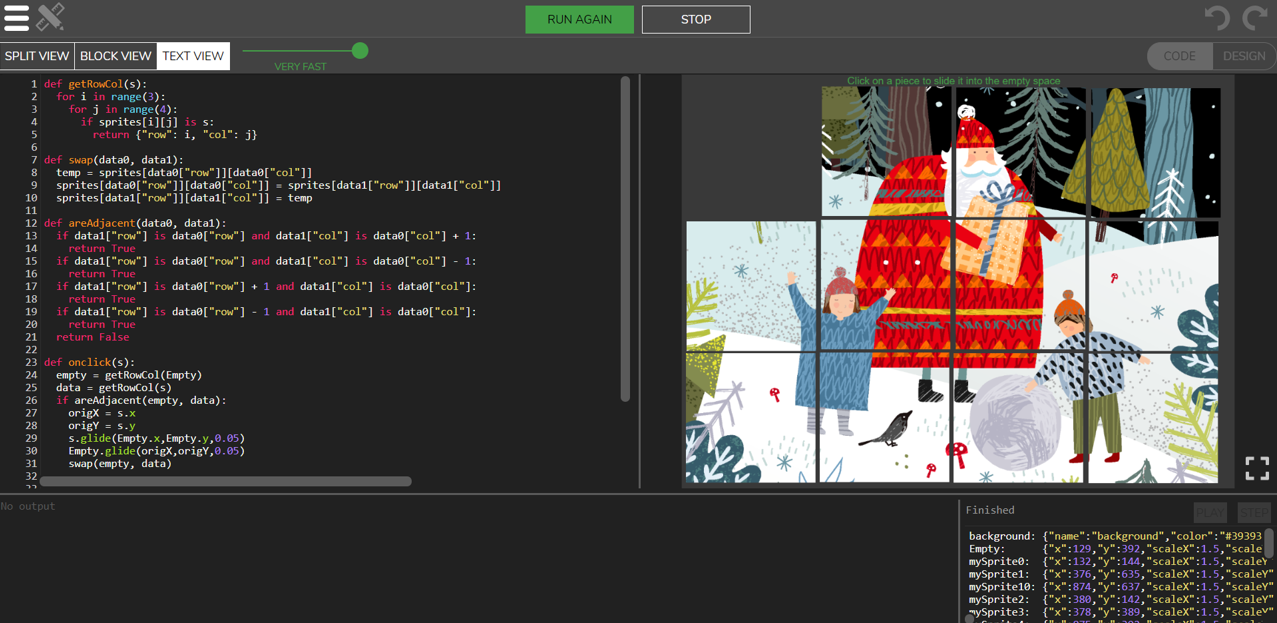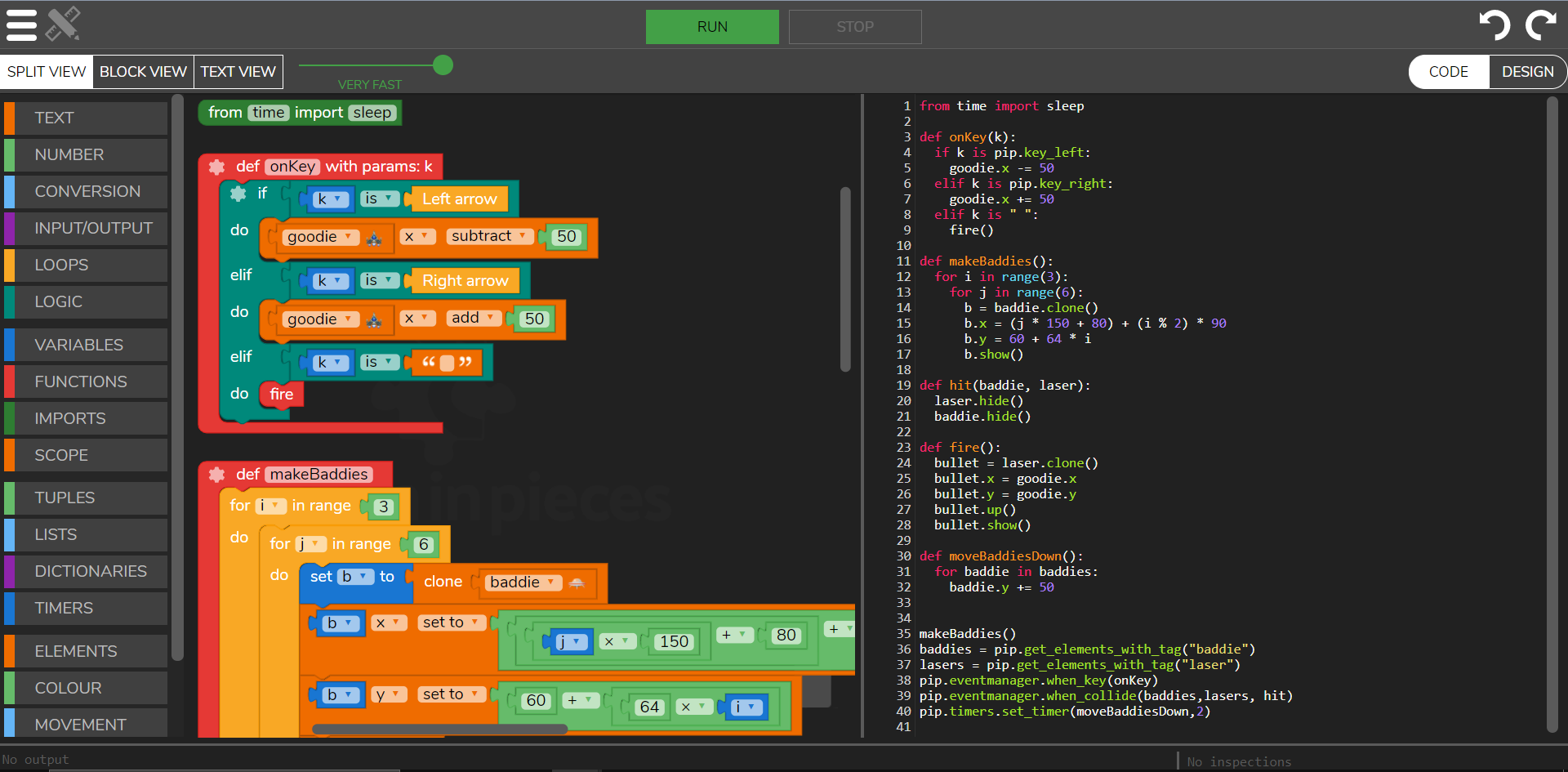Teaching Computer Science with Python in Pieces
Jan. 25, 2021
Python in Pieces is the perfect tool to transition your students from block-based coding to Python with guided lessons, open-ended activities and the ability to translate block-code to Python in both directions.
When translating from block to code just isn’t powerful enough; Python in Pieces can seamlessly translate Python code to block coding. It is designed to transition students from block code, taught in primary schools, to text-based coding taught in secondary schools. Complete with activities and resources, this challenging, interactive environment allows students to learn the coding language of Python whilst enabling both specialist and non-specialist teachers to teach the computing curriculum with confidence.
As teachers we are all striving for learners to take an interest in computer science and develop and nurture problem-solving skills, logic and creativity. The Hour of Code started as a one-hour introduction to computer science, designed to demystify "code", to show that anybody can learn the basics, and to broaden participation in the field of computer science. It has since become a worldwide effort to celebrate computer science, starting with 1-hour coding activities, you can find out more about the hour of code and the activities for this year here.
Python in Pieces and Computer Science Education Week
Python in Pieces is a perfect resource to get your learners coding. Winner of the 2020 ERA award for Secondary products, Python in Pieces is an interactive coding environment, designed to build learner and teacher confidence in the text-based coding language of Python. With the ability to easily translate from block-code to Python, in BOTH directions. Python is also perfect for developing the coding capability of your Grade 7 and 8 learners, the guided lessons allow learners to manage their own learning and teacher solution guides enable teachers to support the child's learning at every step. It is designed around the curriculum with guided lesson activities and clear progression built in.
You can see how one school in the UK makes use of Python in Pieces in the video below:
We spoke to a couple of our learners who all created games through Python in Pieces as to why they made the games , which will hopefully inspire your own learners!
Christmas Slider Game
I really wanted to make a puzzle game. The principles of most puzzle games are straightforward, which means that you can often write them using less code than you'd expect, but they are challenging to play as well.
With Christmas approaching, I was able to get inspiration from Christmas cards and I decided on a sliding puzzle game because although they can be so frustrating to play you get a reward at the end when the scene is revealed!
I think this game is a good example of how a few short well-designed functions can make a compelling user experience.


Space Invaders Game
When we started making Python in Pieces, we used Space Invaders as a benchmark. We said that once people can make Space Invaders using it, we'll know that we're getting close to what we want to achieve.
In design mode, Space Invaders includes just a few images on the screen, and just like if you were making a real game, these are positioned and made dynamic using the code.
It uses cloning, collision detection and timers - all quite advanced features - but it's less than 40 lines of code and I think it's really playable.
Python in Pieces is relatively new to South Africa, so if your school is interested in integrating it into your curriculum or offering it as an extra-curricular activity, please EMAIL us. We would love to unpack the possibilities of this program with you.